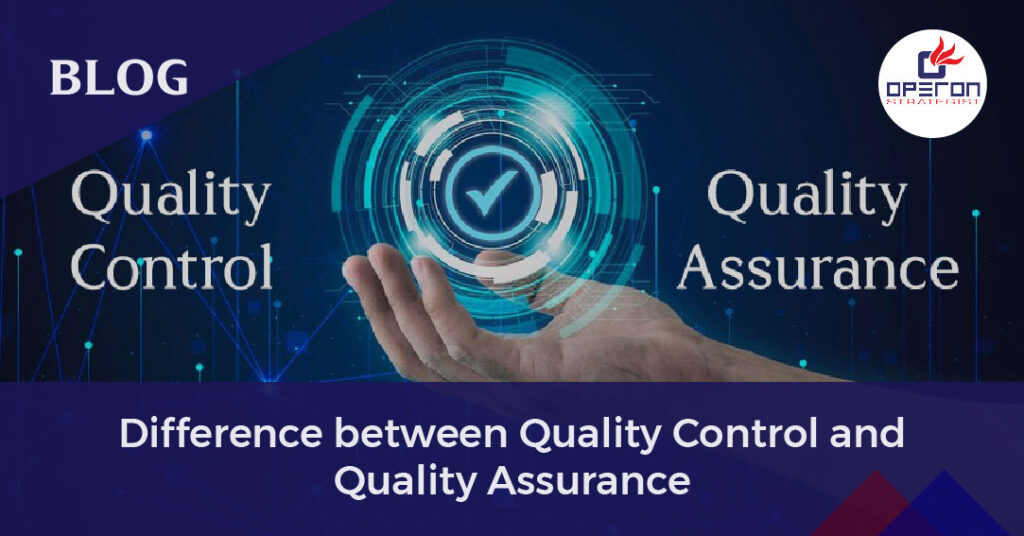Introduction of Quality Control and Quality Assurance:
Quality control and quality assurance are phrases that are commonly used interchangeably. Despite their similarities, the two concepts have distinct differences. Quality control and assurance are a combination of measuring product quality and ensuring products and services fulfill consumer expectations.
Quality assurance is process-oriented and focuses on deformity prevention, whereas quality control is product-oriented and focuses on flaws and distinguishing proof. Quality is incredibly difficult to quantify; it may be simply expressed as “fit or ideal for purpose or use.” It’s all about gathering consumer needs and expectations regarding product functionality, structure, dependability, durability, and cost.
Looking For a Medical Device Regulatory Consultant?
Let’s have a word about your next project
While focusing Quality control and Quality assurance operations on major source categories will result in the most substantial improvements in the total inventory estimates, it is excellent practice to plan to undertake at least the general processes
Quality Control And Quality Assurance Processes:
Quality Assurance processes
- Plan
- Do
- Check
- Act
- CAPA
- Risk Management
Quality control and Quality assurance are both significant aspects of managing quality, but it’s also important to point out that they are not the same thing. When used, Quality control and Quality assurance can help consistently to develop the quality of the product.
Quality control processes
- Quality standards
- Operational policy to deliver quality
- Review of results
- Get feedback
Difference Between Quality Control And Quality Assurance:
Plan
The organization should plan and also establish the process-related objectives and determine the processes that are required to deliver a high-quality end product.
Do
Development and testing of processes and also “do” the necessary changes required in the process.
Check
Checking or monitoring of processes, and also looking after whether it meet the predetermined objectives.
Act
Implement actions that are necessary to achieve the improvements in the processes.
Corrective and Preventive Action (CAPA)
Medical Device organizations need to research and track quality-related occasions all through everyday manufacturing activities. CAPA quality assurance gives that start from any source can be logged, while the automated workflow engine courses records through the suitable examination, root cause analysis, planning, and confirmation and adequacy steps.
Risk Management
Risk management processes to other quality management processes. Guarantees compliance with regulations and standards like 21 CFR Part 820. Decreases the cost of quality by permitting resources to focus on the areas of highest risk.
These steps are to guarantee that processes followed in the association are assessed and enhanced periodically. An association must utilize Quality Assurance to guarantee that the product is planned and executed with the right techniques. This helps reduce issues and blunders, in the final product.
Quality Control processes
Quality Standards
In certain enterprises, you may need to satisfy quality standards set by an outside body, for example, an industry affiliation, the local health and security examiner, or a government regulatory organization.
In others, there aren’t any official quality guidelines, so you\’ll have to set your own. Every division of your business will have distinctive quality control measures. Nonetheless, they should all be objectively measurable.
Operational Policy to Deliver Quality
Very much planned processes lead to excellent products and services. If you make great processes, ceaselessly measure the aftereffects of the processes, and work to reliably improve the procedure, your product or service will show signs of improvement and will get better.
Review of Results
Most business programming, from monetary and bookkeeping applications to customer relationship management the board or client service tools, lets you modify the data you gather and use dashboards to see it initially. Survey your information routinely to perceive how well your organization is satisfying its quality standards.
Get feedback
Utilize measurable feedback from outside sources, for example, client overviews, online evaluations and audits, and net promoter scores (NPS), to get a full image of product and service quality. Likewise, get ordinary input from workers. How well are the operational procedures attempting to deliver quality?
Difference Between Quality Control And Quality Assurance
What is Quality Assurance?
Quality Assurance is popularly known as QA Testing, and is defined as an activity to ensure that an organization is providing the best possible product or service to customers.
What is Quality Control?
Quality control can popularly be abbreviated as QC. It is a Software Engineering process used to ensure the quality of a product or a service. It does not deal with the processes used to create a product; rather it examines the quality of the end products and the outcome.
Quality Assurance And Quality Control:
Quality Assurance | Quality Control | |
Definition | QA is a set of activities for assuring the quality of the processes from which products are developed | QC is a set of activities for assuring quality in the products. These activities focus on identifying defects or faults in the actual products. |
Focus on | QA aims to prevent defects and faults with a focus on the process used to make the product | QC aims to identify (and correct) the defects and faults in the finished product. Quality control, therefore, is a reactive process. |
Goal | The goal of QA is to improve development and test processes so that defects do not arise when the product is being developed. | The goal of QC is to identify defects after a product is developed and before it’s released. |
Responsibility | Everyone on the team involved in developing the product is responsible for quality assurance. | Quality control is usually the responsibility of a specific team that tests the product for defects. |
Example | Verification is an example of QA | Validation/Software Testing is an example of QC |
Quality is an important consideration when it comes to any product or service. With such fierce market competition, quality has become the primary differentiator for practically all products and services. As a result, all manufacturers and service providers are continuously seeking ways to improve the quality of their products or services. When it comes to quality control, is a product-focused process. Quality assurance is a process-oriented activity. Quality control guarantees that the end product fulfills the quality and specifications, whereas quality assurance ensures that the manufacturing process adheres to the standards. As a result, quality assurance can be considered a proactive activity, whereas quality control is a reactive procedure.
Empowering Your Medical Device Manufacturing Journey With Operon Strategist:
Operon Strategist specializes in maintaining compliance with essential pharmaceutical industry standards, particularly 21 CFR Parts 210 and 211 for Quality Assurance. Our services include creating thorough training modules to help people understand regulatory obligations, as well as conducting strategic reviews and assessments to improve organizational procedures.
Are You Thinking of Beginning a Medical Device Manufacturing Business?
We offer specialized support to enterprises entering the medical device manufacturing field, including regulatory permissions, CDSCO licenses, and ISO certifications. Contact us to learn more about how we can help you along your journey.
- adminhttps://operonstrategist.com/author/admin-2/
- adminhttps://operonstrategist.com/author/admin-2/
- adminhttps://operonstrategist.com/author/admin-2/
- adminhttps://operonstrategist.com/author/admin-2/



